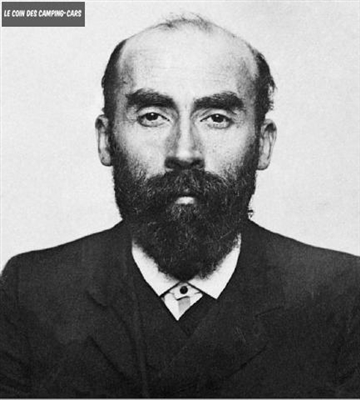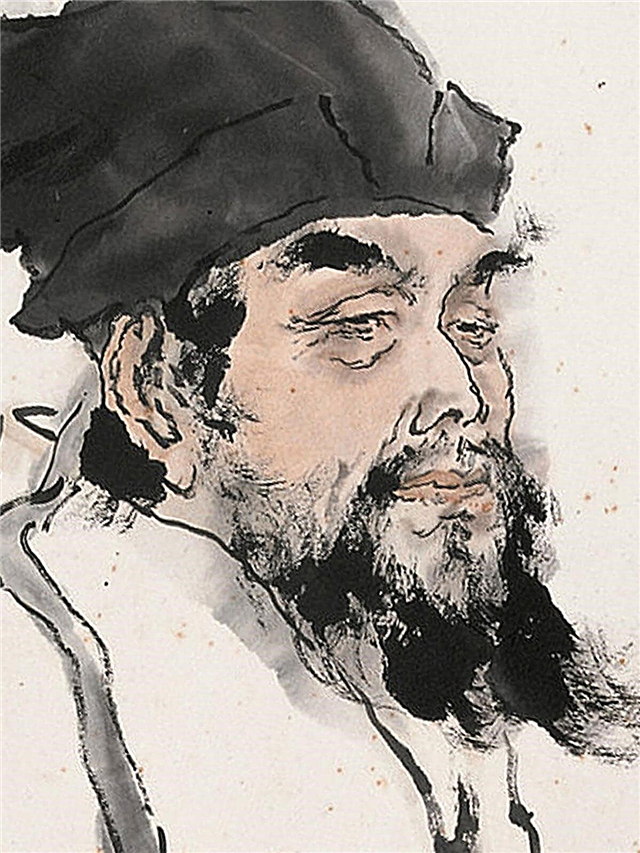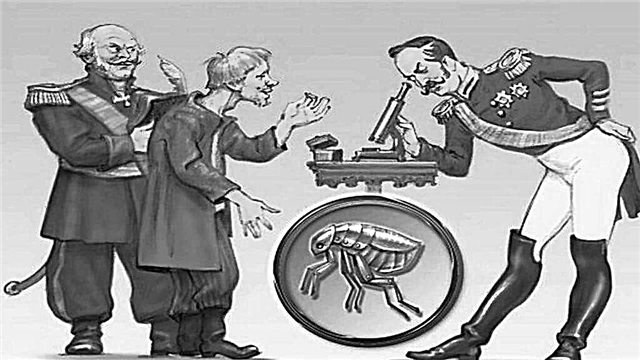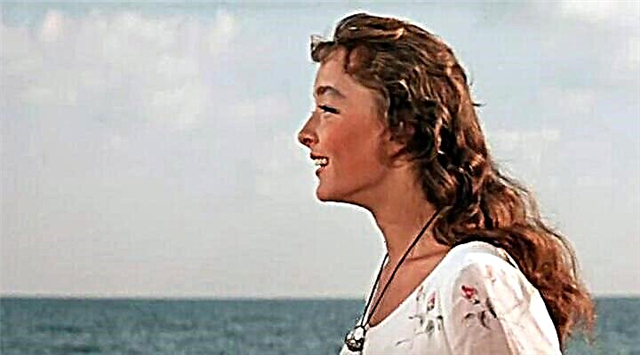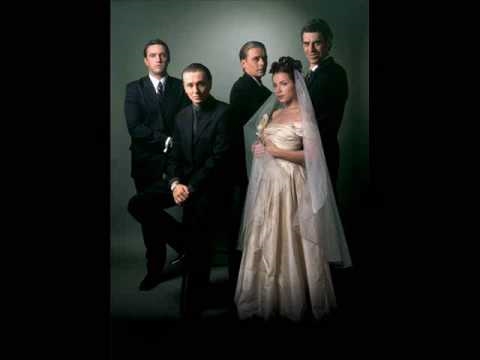The psychological subtleties of Ivan Bunin's work are still of interest to the reader, although the realities about which he wrote have sunk into oblivion. The problem of the small-local nobility is no longer relevant, but the theme of the growing up of a person, which is the semantic center of the story “Figures,” is also inexhaustible.
History of creation
Already in the second half of the 19th century, Russian literature developed a tradition of addressing the theme of childhood. Lev Tolstoy, Sergei Aksakov, Maxim Gorky and others wrote about this beautiful time of life. To look at the world through the eyes of a child, to understand what he feels and experiences, what this small and not yet fully developed, but already quite distinctive personality dreams of, all this interested and continues to interest writers. The story of Ivan Alekseevich Bunin “Figures” is devoted to the problem of childhood.
This work was written in 1906 and is a confession of an adult, uncle, in front of his nephew. Before the reader is a first-person story in three parts about one case, rather, even an incident, from those times when the little boy Zhenya was just learning to read, count and write, and his biggest dream was to quickly learn the numbers.
The meaning of the name
Why was Bunin's story called “Figures”? The dream to learn the numbers completely captured the main character. It is made by the author in the title of the story. However, this is more than just a whim of the young Zhenya.
The name “numbers” is a symbol of a childhood dream, and at the same time it can be interpreted as an apple of discord, an object that puts an adult and a child on the opposite sides of the conflict, in which it is very difficult to find the right one.
Essence
The plot focuses on the conflict between his uncle and his nephew, the boy Zhenya. The child, full of energy to learn, asks him to show him the numbers, but the adult is too lazy to go to the city for pencils, and he refuses, all the while postponing the lesson.
Zhenya, so caught up in a craving for knowledge, cannot endure and begins to behave too actively, which annoys her uncle. The result is a major quarrel, during which neither one nor the other wants to admit their wrongness - and, meanwhile, it is common to both of them - only the grandmother makes attempts to reconcile the "men". In the end, she succeeds, and, having gone through this conflict, both the child and the adult, having learned a life lesson from him, sit down at the table and work on the bill.
Genre, direction, composition
The story consists of seven parts, in each of which the uncle himself is the narrator. He begins his story by addressing his wife with words about a quarrel that occurred between them in the past. Thus, the author immediately determines the subject that will be discussed. Using the “look into the past” technique, the writer forms a special perception of this story - instructive, instructive. At the same time, the narrator himself evaluates his actions and draws a moral conclusion from them.
Moreover, his speech is not just a statement of events, it is a living memory; the author’s language is light, dynamic and emotional, thanks to which we sincerely empathize with the heroes and try to find excuse for them in this quarrel.
The main characters and their characteristics
The central images are, of course, the narrator and his nephew. Their relationships drive action and become the basis of the conflict of the work. Despite the fact that we see everything that is happening from the side of my uncle, his words are quite objective and contain a component of analysis.
A very touching and at the same time exact description of Zhenya is given in the first part:
... You are a big naughty man. When something captivates you, you don’t know how to keep it. You often from early morning to late night do not give rest to the whole house with your cry and legwork. But I don’t know anything more touching than you, when you, having enjoyed your riot, become quiet, wander around the rooms and, finally, come up and press lonely on my shoulder!
Characteristics of Zhenya is an active, curious and very loving child, despite the fact that sometimes he is overwhelmed by whims. His uncle loves him very much, every time when strictness and inflexibility were required of him, as from an adult, he was insanely sorry for the child. However, in a quarrel between the two of them there is a considerable proportion of his guilt, because he could not show indulgence and tenderness in time; up above him took pride and obstinacy. This is a characteristic of an uncle - a person who is emotional and quick-tempered, but sincerely attached to his nephew.
Also in the story are Zhenya's mother and grandmother, who also disagreed: mother is on the side of her uncle, and grandmother is Zhenya. However, she does not scold the quarrels, but tries to reconcile them. Grandmother, as an example of wisdom and deliberation, as an experienced person in life, understands the stupidity of this discord, and in the finale she only manages to establish peace between the main characters.
Topics
The theme of the story is the relationship between children and adults. For a child, everything around is an unknown reality, it is curious and alluring, and for an adult, this reality is no longer of such interest. The result is a misunderstanding that leads to conflict.
The author demonstrates the children's perception of the world to an adult reader in order to fill the gulf of misunderstanding between members of the same family. Childhood is fleeting, it is easily forgotten, so it is very difficult for adults to realize and feel what the child is experiencing.
However, the early time of life is the most crucial time when the foundation of the personality is laid. The fate of his parents depends on whether the parents can understand their heir. Uncle should by all means promote the curiosity of his nephew, only in this way he will grow up to be an educated person. However, at the same time, one should not indulge his whims, otherwise the entire educational effect of enlightenment will come to naught.
Problems
In his work, the author raises the problem of education, relations between adults and children, the difference in their perception of the world around them. Also important are questions of children's curiosity and dreams, the desire to learn and develop that is characteristic of every child, questions of human nature, which stubbornness and laziness sometimes interfere with a rational solution to the problem.
The moral issues of the work directly points to the eternal vices of people of all ages: categoricality, selfishness, optionality, etc. An adult over the years only aggravates children's imperfections and competes with the child, succumbing to nervous excitement. Showing how willingly respectable gentlemen fall into childhood, the author draws attention to the fact that maturity is determined by the ability to control oneself, and not age.
Meaning
The main idea of the story is that in dealing with children it is necessary to behave in an adult way. The numbers in determining age do not mean anything, because over the years a person may not change. Uncle easily gets mad, showing a capricious pupil a bad example. He may act up being capricious, but he will inculcate a nascent personality with even more negative traits such as stubbornness, temper, and categoricalness.
The idea is that uncle, under the influence of worldly wisdom, chooses the right path from his grandmother's lips: he goes back and corrects his mistake, realizing this promise long ago. Eugene and his teacher peacefully take up the study of numbers.
What does it teach?
The author makes us think that it is necessary to remember and take into account this difference in experience in relation to the world, because a child is a completely different creature unlike adults, and requires a special approach. The conclusion is simple: you need to responsibly approach the upbringing of the younger generation without giving a negative example.
Moreover, the right side cannot be unambiguously distinguished in a conflict, because in any conflict everyone has their own truth, but everyone is wrong to some extent, so you should always be able to compromise and find it. This is the moral meaning of the story.


